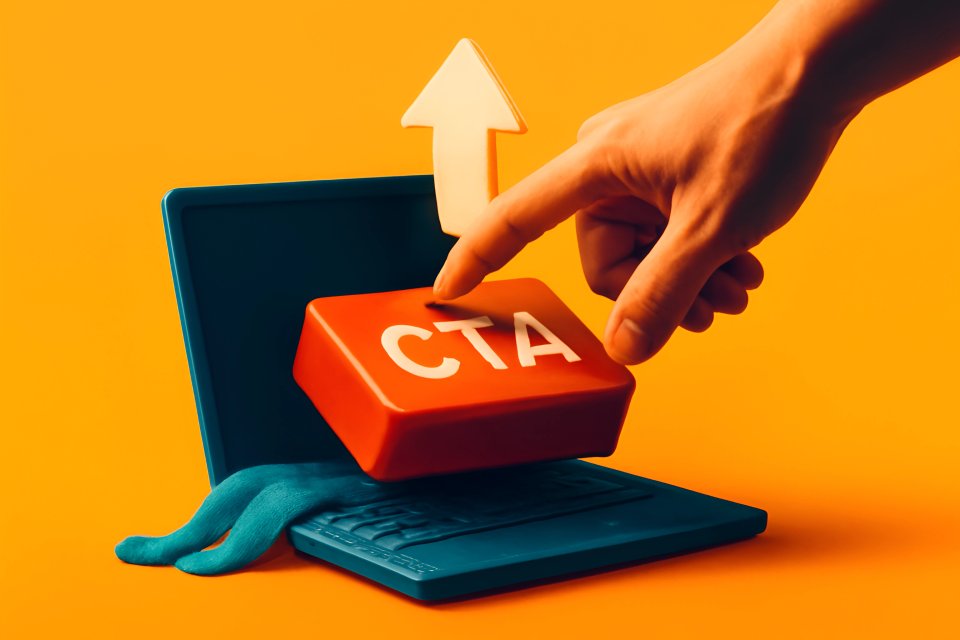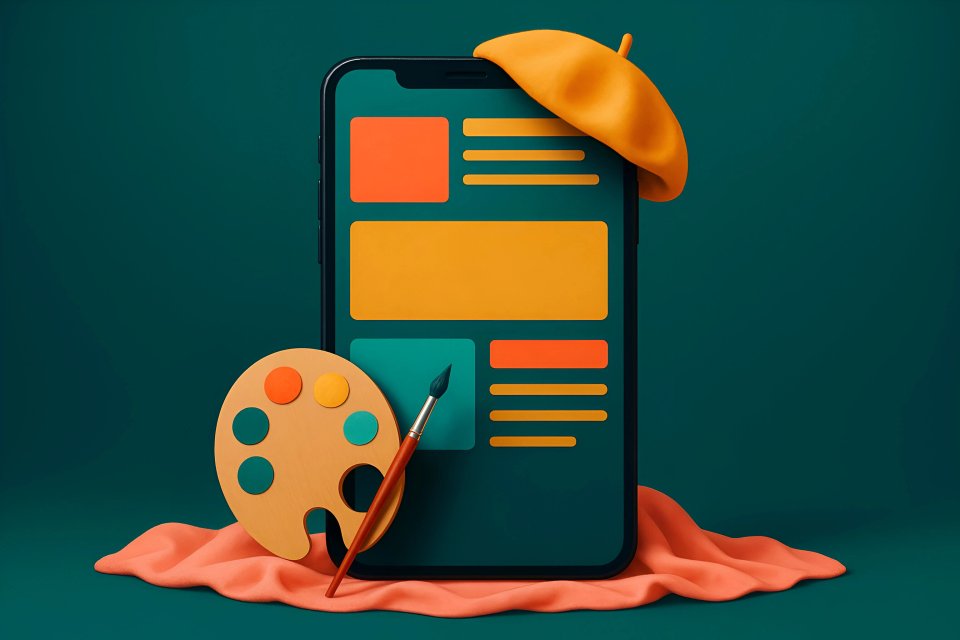Is your website a ghost town of missed opportunities? You’re pulling in visitors, your content is sharp, but those crucial clicks, the ones that turn browsers into buyers, just aren’t happening. The silent saboteur could be right there, staring you in the face: your Call-to-Action placement.
A Call-to-Action, or CTA, is your digital handshake, your direct invitation for users to take the next step. It’s the "Buy Now," the "Sign Up Today," the "Learn More" that transforms passive interest into active engagement. But here’s the kicker: if that invitation is lost in the crowd, awkwardly placed, or simply invisible, it’s like shouting into the wind – your message, no matter how compelling, gets lost, and so do your profits. Strategic placement isn't just important; it's the lifeblood of high conversion rates, directly impacting your ability to generate leads, drive sales, and achieve your most ambitious business goals.
At CaptivateClick, we’ve spent over 15 years dissecting the art and science of digital experiences that don't just look good, but convert like crazy. We know a well-placed CTA is far more than a button; it's the critical pivot point in your customer's journey, the moment desire turns into decision. This isn't just about aesthetics; it's about understanding human psychology, strategic design, and relentless testing – all to ensure your message hits home and your audience takes action. Get ready, because we’re about to pull back the curtain on the most effective CTA placement techniques, explore the psychology that makes them tick, delve into design considerations, and show you how to test your way to a high-conversion masterpiece.
The "Why": Understanding the Impact of Strategic CTA Placement
Guiding the User Journey
Imagine your website as a bustling city, and your users as eager tourists. Without clear signs, they’re lost, frustrated, and likely to leave. Your CTAs are those crucial signposts, expertly placed to guide visitors smoothly from arrival to their desired destination, whether that's making a purchase, signing up for a newsletter, or requesting a consultation.
Each click is a step forward, a commitment. By strategically placing CTAs, you align with different stages of the buyer's journey. An awareness-stage visitor might respond to a "Download Free Guide" CTA, while someone in the decision stage is looking for "Get a Quote" or "Buy Now." Understanding these customer journey stages and how to map them is fundamental to placing CTAs where they'll have the most impact, as detailed by insights from Qualtrics on customer experience.
Poorly placed CTAs, or worse, missing ones, create dead ends. Users hit a wall, their momentum stalls, and that spark of interest fizzles out. You want them to feel a natural progression, an intuitive flow that makes taking the next step feel like the most logical thing in the world.
Boosting Conversion Rates
Let's talk brass tacks: your conversion rate. This is where the magic of strategic CTA placement truly shines, directly impacting your bottom line. The simple truth is, if users can't see your CTA, or if it's a hassle to find, they won't click it – a fundamental aspect of conversion rate optimization.
There's a direct, undeniable link between a CTA's visibility, its accessibility, and the click-through rates it achieves. Consider that buttons positioned in the upper third of the fold can receive 73% more visibility than those below, potentially leading to a 44% increase in click-throughs (as supported by data from ClearVoice on above-the-fold CTAs and Embryo's analysis of CTA relevance). Every visitor who leaves without converting because your CTA was poorly placed is a tangible, lost opportunity, a sale that could have been.
Don't let these opportunities slip through your fingers. Think of each CTA as a cash register; if it's hidden in the back room, you're not making any sales. Precise CTA positioning, when done right, can dramatically increase conversion rates, sometimes by as much as 161% (Wallaroo Media on CTA best practices, WiserNotify CTA statistics).
Enhancing Website User Engagement
Want users to stick around, explore, and ultimately convert? Then you need to make their experience seamless and satisfying. Strategic CTA placement is a cornerstone of strong website user engagement, reducing friction and making it incredibly easy for users to take that next, desired step.
When a CTA appears exactly where a user expects it, or at the precise moment they're ready to act, it feels intuitive, almost like you're reading their mind. This isn't just about getting a click; it's about fostering a positive user experience (UX). A website that anticipates user needs and guides them effortlessly builds trust and encourages deeper engagement.
At CaptivateClick, our UI/UX Design services are built around this very principle: creating digital environments where users feel understood and empowered. Intuitive CTA placement is a key component, ensuring that every interaction is smooth, logical, and moves the user closer to their goal – and yours.
The Psychology Behind High-Converting CTA Placement
Visual Hierarchy & Fitt's Law
Ever wonder why some buttons just scream "click me" while others fade into the background? It's often down to smart psychology. Users don't read web pages; they scan them, typically in patterns like the F-pattern (for text-heavy pages) or the Z-pattern (for more visual layouts), as highlighted by research into CTA effectiveness by WPMU DEV. Your CTAs need to intercept these natural scanning paths.
This is where Fitt's Law comes into play – a powerful principle stating that the time to acquire a target (like your CTA button) is a function of the distance to and size of the target. In plain English: make your CTAs big enough to be easily clickable and place them close to related information. E-commerce sites leveraging Fitt's Law have seen checkout rates soar by positioning "Buy Now" buttons near product details (Conversion Sciences on Fitt's Law in button design).
Think of it like this: you want your CTA to be the easiest, most obvious next step. No hunting, no squinting, just a clear path to action. This isn't just design; it's designing for human behavior.
The Principle of Contrast & Attention
Your CTA needs to be a beacon, not a wallflower. The principle of contrast is your secret weapon here, using color and whitespace to make your call-to-action pop off the page without assaulting the senses. It’s about creating a visual distinction that draws the eye irresistibly.
Imagine a vibrant button against a muted background – it naturally commands attention. The Von Restorff effect suggests that items that stand out are more likely to be remembered and clicked, with contrasting CTAs attracting attention 83% faster (Align.vn on CTA design tips). This doesn't mean resorting to garish, clashing colors; strategic use of your brand palette, ensuring the CTA color is distinct from surrounding elements, is key.
Whitespace, or negative space, is equally crucial. Giving your CTA room to breathe makes it appear more important and easier to focus on. CTAs surrounded by ample margins can receive significantly more clicks than those crowded by other elements (Wallaroo Media, WPMU DEV).
Cognitive Load & Decision Fatigue
Ever felt overwhelmed by too many choices? Your website visitors feel the same way. Presenting a barrage of CTAs or unclear options creates cognitive load, leading to decision fatigue. And a confused mind almost always says "no."
The solution? Simplicity and clarity. For any given page or section, aim for a primary CTA that aligns with the user's immediate goal. Research from Martech.org on high-performing CTAs indicates that landing pages with a single, clear call to action can convert significantly better than those with multiple, competing CTAs.
This is about making the decision easy, almost effortless. You want your user to see the CTA and think, "Yes, that's exactly what I want to do next." Reduce the mental effort, and you'll see your conversions climb.
Context is King: Relevance and Timing
A CTA, no matter how beautifully designed or psychologically optimized, will fall flat if it’s out of context. Imagine reading an in-depth product review, feeling convinced, and then... no "Buy Now" button in sight. Frustrating, right?
The most powerful CTAs are those that appear precisely when and where they make the most sense. They should logically follow the content that has just built desire or provided a solution. For instance, after reading a compelling case study, a "See Our Results" or "Get a Custom Demo" CTA feels like a natural next step.
This is about understanding your user's mindset at each point of their journey. A CTA that appears right when a user is most informed, most convinced, or most emotionally engaged has an almost magnetic pull. As Outbrain suggests with CTA examples, contextual CTAs within content that deliver value first are incredibly effective.
Prime Real Estate: Top CTA Placement Techniques for Your Website
Above the Fold (The Classic)
The "above the fold" debate rages on, but here's the reality: what appears on screen without scrolling still gets immediate attention. For your most critical primary CTAs, especially on homepages and landing pages, this prime real estate is invaluable. Why? Because it guarantees instant visibility for the action you most want users to take.
Think of it as your storefront window display. It’s your first, best chance to grab attention and communicate your core offer. Use this space for high-impact CTAs like "Get Started Free," "Shop Our Collection," or "Request a Demo." While users do scroll, ensuring your main value proposition and corresponding CTA are immediately visible caters to those with limited time or attention, as highlighted by studies showing higher visibility for above-the-fold CTAs.
However, don't just slap a button there. Ensure it’s part of a compelling narrative, supported by a strong headline and benefit-driven copy. The goal is immediate clarity and a powerful nudge towards action.
In the Hero Section
Your hero section is the visual powerhouse of your page, the first thing that truly captivates your audience. Placing a prominent, compelling primary CTA here leverages this high-impact area to its fullest potential. It’s where your biggest, boldest promise meets an unmissable invitation.
Why does this work so well? The hero section sets the tone and communicates your unique value proposition in seconds. A well-integrated CTA here, as suggested by Erin Pennings on optimizing hero sections, feels like the natural culmination of that initial powerful message. It’s perfect for your main conversion goal, be it "Watch the Demo," "Explore Features," or "Join Our Community."
Make sure your hero CTA is visually distinct, uses action-oriented language, and directly relates to the headline and imagery. This synergy creates an irresistible pull, urging users to take that first crucial step into your conversion funnel.
Within Content (Contextual CTAs)
Imagine you're reading a fascinating blog post that perfectly solves a problem you've been grappling with. Right at the moment of enlightenment, you see a CTA offering an even deeper solution – a related service, a downloadable guide, or a relevant product. That’s the power of contextual CTAs.
These CTAs are woven naturally into your blog posts, articles, or service descriptions, appearing right after you’ve delivered significant value or addressed a specific pain point. For example, after explaining the benefits of a particular software feature, a CTA like Learn more about our [Feature Name] integration feels timely and helpful. Blog posts embedding CTAs after statistical claims or problem-solution narratives can see significantly higher click-through rates (Outbrain's CTA examples, Dev.to's guide on CTAs).
The key is relevance and subtlety. The CTA shouldn't interrupt the reading flow but rather enhance it by offering a logical next step when the user's interest is piqued.
End of Page/Post
Your user has just invested their time consuming your content, whether it's a detailed blog post, a service page, or your "About Us" story. They've reached the end. Now what? This is a prime opportunity for a well-placed CTA.
Placing a CTA at the end of a page or post provides a logical next step for engaged readers. They've absorbed your information, and if you've done your job well, they're wondering what to do next. This is ideal for CTAs like "Contact Us for a Consultation," "Request a Personalized Quote," or "Read More Related Articles."
This placement respects the user's journey, offering a call to action only after they've received value. It’s less about an immediate grab and more about guiding an already interested user further down the funnel.
Sticky/Floating Bars (Header, Footer, or Sidebar)
Want to keep your most important call to action in sight, no matter how far your users scroll? Sticky or floating CTAs are your answer. These bars, typically anchored to the header, footer, or sidebar, remain persistently visible as users navigate your page.
This technique is incredibly effective for offers that are relevant throughout the user's visit, such as "Book a Demo," "Start Your Free Trial," or "Subscribe to Our Newsletter." The constant visibility ensures the CTA is always accessible, ready for when the user decides to act. Mobile optimization with sticky footer CTAs can improve mobile conversions by maintaining visibility during scrolling (Simtech Development on sticky CTAs).
Use sticky CTAs judiciously to avoid overwhelming the user. Ensure they are unobtrusive yet noticeable, providing a constant, gentle reminder of the key action you want them to take.
On Product/Service Pages
Nowhere is a clear, compelling CTA more critical than on your product or service pages. This is where desire meets decision, where browsers are on the cusp of becoming buyers. Your CTAs here need to be unambiguous and action-oriented.
For e-commerce, this means prominent Add to Cart or Buy Now buttons. For services, it could be Get Started, Request a Quote, or Schedule a Consultation. These CTAs should be directly related to the offering, placed near pricing information and key benefit summaries. At CaptivateClick, our E-commerce Web Design services always prioritize clear, conversion-focused CTAs on product pages.
The goal is to make the purchase or inquiry process as seamless as possible. Remove any doubt about what to do next, and make that button irresistible.
Exit-Intent Pop-ups
Just as a visitor is about to leave your site – cursor heading for the back button or to close the tab – an exit-intent pop-up appears. This is your last-chance saloon, a final opportunity to capture their attention and potentially convert them or at least keep them engaged.
These pop-ups work best when they offer something genuinely valuable: a special discount, a free resource, an invitation to a webinar, or a chance to subscribe for exclusive content. According to ConvertFlow's examples of exit-intent pop-ups, these can be highly effective when implemented correctly. The key is to make the offer compelling enough to interrupt their departure and reconsider.
Use exit-intent pop-ups sparingly and strategically. An irrelevant or overly aggressive pop-up can be annoying, but a well-timed, valuable offer can turn a lost visitor into a lead or even a customer.
Pricing Pages
Your pricing page is a high-stakes environment. Visitors here are actively evaluating your offerings and their costs, making them highly qualified prospects. Your CTAs on this page must be crystal clear, directly corresponding to each plan or option.
For each pricing tier, include a distinct CTA like Sign Up, Choose Plan, or Get Started with [Plan Name]. These buttons should be prominent, easy to differentiate, and ideally, reinforce the value of the chosen plan. WiserNotify highlights best practices for pricing pages that emphasize clear CTAs.
Make it incredibly easy for users to select their desired plan and move forward. Any confusion here can lead to abandoned decisions, so clarity and directness are paramount.
Thank You Pages
The conversion isn't always the end of the journey; it can be the beginning of a deeper relationship. Your "Thank You" page, displayed after a user completes an action (like a purchase or sign-up), is valuable real estate for a secondary CTA.
Why let the engagement stop there? Use this opportunity to suggest another relevant action. This could be "Follow Us on Social Media," "Download Our Free Getting Started Guide," "Browse Related Products," or even "Refer a Friend and Get a Discount." Many website CTAs aim to build your email list, and a thank you page can bridge to how you'll nurture that lead, perhaps linking to information about what to expect from your email marketing campaigns that build B2B relationships or general effective email marketing campaign strategies.
A well-chosen secondary CTA on your thank you page can increase customer lifetime value, boost social engagement, or provide further value to your newly acquired lead or customer.
Beyond Placement: Essential CTA Design Best Practices
Even the most perfectly placed CTA will fail if its design doesn't compel a click. Think of placement as getting your CTA to the right party; design is how it's dressed and how it speaks. These CTA design best practices work hand-in-hand with placement to maximize your conversions.
Compelling Copy
Words have power. Your CTA button copy isn't just a label; it's a micro-pitch. It needs to be action-oriented, benefit-driven, clear, and incredibly concise. Ditch vague terms like "Submit" or "Click Here."
Instead, use strong verbs that promise a specific outcome: Get Your Free Quote, Download My Ebook, Start My 30-Day Trial. Action-oriented verbs in the present continuous tense, like "Getting Started" versus "Start," can improve conversion rates by implying immediate progression (Dev.to's CTA guide). Make it irresistible.
Focus on what the user gets, not what they have to do. The right words can ignite desire and overcome hesitation, turning a passive observer into an active participant.
Contrasting Colors & Visual Prominence
Your CTA button needs to stand out like a lighthouse in a storm. Color is your most powerful tool for achieving this visual prominence. Choose a color that contrasts sharply with your page's background and surrounding elements, yet still aligns with your brand identity.
This doesn't mean it has to be loud or obnoxious, but it must be distinct. The Von Restorff effect, as mentioned by Align.vn's design tips, shows that unique items are more memorable and noticeable. A/B tests often reveal significant conversion lifts from simple color changes, with some studies showing orange buttons outperforming blue ones in certain contexts (WiserNotify CTA statistics).
The goal is to make your CTA visually jump out, guiding the user's eye directly to the desired action. Don't let it blend in; make it command attention.
Appropriate Size & Shape
If your CTA is too small, it’s easily missed or difficult to click, especially on mobile devices. If it’s too large, it can be overwhelming and disrupt the page's visual harmony. The key is finding that Goldilocks zone: just right.
Your button should be large enough to be instantly noticeable and easily clickable (or tappable) without dominating the page. Consider Fitt's Law again: larger targets are easier to hit. Rounded corners are often preferred as they are perceived as friendlier and draw the eye towards the button's center.
Ultimately, the size and shape should make the CTA feel inviting and effortless to interact with. It should look like a button and behave like one.
White Space
Give your CTA some breathing room! White space (or negative space) around your call-to-action button is crucial for making it stand out. Crowding your CTA with other text or visual elements diminishes its impact and makes it harder to spot.
Think of white space as a spotlight, drawing focus to what's important. Ample spacing signals to the user that this element deserves their attention. Studies suggest that CTAs with generous margins receive more clicks (Wallaroo Media's best practices).
Don't be afraid of empty space; it's a powerful design tool that enhances clarity and guides the user's eye directly to your call to action.
Mobile Responsiveness
With a majority of web traffic now coming from mobile devices, your CTAs must be mobile-friendly. A button that looks great on a desktop can be a usability nightmare on a small screen if not properly optimized. This is a critical aspect of CTA design best practices.
Ensure your CTAs are large enough to be easily tapped with a thumb, with sufficient spacing to prevent accidental clicks on adjacent elements. Text should be legible, and the button should adapt gracefully to different screen sizes. At CaptivateClick, we emphasize this in our approach to effective mobile app UI/UX design, because a non-responsive CTA is a conversion killer on mobile.
Test your CTAs rigorously across various devices and screen orientations. A seamless mobile experience is no longer a luxury; it's an absolute necessity for high conversion rates.
Real-World Inspiration: Case Studies & Examples (Fresh Insights)
Theory is great, but seeing strategic CTA placement in action is where the real learning happens. Let's look at how these techniques can transform website performance, drawing inspiration from scenarios similar to projects CaptivateClick champions. These examples provide fresh insights into the tangible impact of smart CTA strategies.
Example 1: E-commerce Site Transformation
Imagine an online outdoor gear store, let's call it "FjällAdventure," struggling with cart abandonment. Their "Add to Cart" button was small, below the fold on product pages, and the "Proceed to Checkout" CTA in the cart was easily missed. Users were adding items but not completing purchases, a classic sign of friction in the purchase funnel.
By redesigning their product pages, they moved a larger, brightly colored "Add to Cart" button right next to the product image and price, making it unmissable. They also implemented a sticky mini-cart summary with a clear "Checkout Now" CTA that remained visible as users browsed. The result? A hypothetical 25% reduction in cart abandonment and a 15% increase in completed sales, demonstrating the direct impact of CTA visibility and accessibility in the e-commerce conversion funnel optimization process.
This transformation underscores how repositioning key CTAs based on user flow analysis can dramatically improve conversions at critical stages of the e-commerce buying journey.
Example 2: B2B Lead Generation Website
Consider a B2B consultancy, "Innovate Solutions," aiming to increase demo requests for their complex software. Their original site had a single "Contact Us" CTA buried in the footer. Potential leads, intrigued by service descriptions, had no immediate next step to learn more specifically about how the solution could address their needs.
Innovate Solutions revamped their service pages by adding contextual CTAs like See How [Service Name] Solves [Client Pain Point] after detailed explanations. They also introduced a sticky header bar with a persistent "Request a Free Consultation" CTA. This multi-CTA strategy, tailored to different engagement points, could lead to a 40% uplift in qualified demo requests, as users found relevant calls to action precisely when their interest peaked, a principle that also applies to email marketing tactics for lead generation once an initial contact is made.
This scenario highlights how using multiple, strategically placed CTAs can cater to users at various stages of consideration, significantly boosting lead generation for B2B services. This is a core part of what we do with expert conversion optimization techniques for e-commerce, and the underlying principles are transferable to B2B contexts.
Example 3: SaaS Company Onboarding
Picture a SaaS startup, "StreamlineHQ," offering a project management tool. Their homepage hero section had a vague "Learn More" CTA, and the path to starting a free trial was unclear, resulting in low trial sign-ups despite good traffic. Users were interested but hesitant to commit without a clear understanding of the immediate benefit.
StreamlineHQ A/B tested their hero section, replacing "Learn More" with a benefit-driven Start Your Free 14-Day Trial – No Credit Card Required. They also added clear Try Feature X CTAs throughout their interactive feature tour. These changes, focusing on clarity and reducing perceived risk, could easily double their trial sign-up rate, showcasing how prominent and reassuring CTAs are vital for primary conversion goals, especially in SaaS.
This example emphasizes that for SaaS, the initial onboarding CTAs must be exceptionally clear, benefit-oriented, and strategically placed to convert interest into active trial users.
Don't Guess, Test! Optimizing Your CTA Placement for Maximum Impact
You've learned the psychology and the prime locations, but here’s a crucial truth: there's no one-size-fits-all solution for CTA placement. What works wonders for one website might fall flat on another. That's why you can't just set it and forget it; you must continuously test and optimize.
The Power of A/B Testing
Want to know for sure which CTA placement, copy, color, or design truly resonates with your audience? Stop guessing and start A/B testing. This method allows you to compare two or more versions of a page with different CTA configurations to see which one performs better.
You can test a CTA above the fold versus within the content, a red button versus a green one, or "Get Started" versus "Try It Free." Small changes can lead to significant lifts in conversion. At CaptivateClick, A/B Testing & Performance Tracking are integral to our Conversion Optimization strategies, because data-driven decisions always trump assumptions. As Nielsen Norman Group points out, A/B testing is fundamental for iterative improvement.
Systematically testing your CTAs takes the guesswork out of optimization and puts you on a clear path to higher conversion rates. It’s an ongoing process that ensures your CTAs are always working at peak performance.
Utilizing Heatmaps and Scroll Maps
Ever wished you could see your website through your users' eyes? Heatmaps and scroll maps offer the next best thing. Heatmaps visually represent where users click, move their mouse, and focus their attention, revealing which parts of your page (and your CTAs) are getting noticed and which are being ignored.
Scroll maps show how far down your pages users are scrolling. Are they even reaching that crucial CTA you placed at the bottom of a long sales page? This data is invaluable for understanding if your current CTA placements are even visible to the majority of your audience. Tools like Hotjar provide advanced funnel analysis capabilities that can incorporate these visual insights.
By analyzing these visual reports, you can identify "cold spots" where CTAs are needed or "hot spots" that are performing well, allowing you to make informed decisions about placement adjustments.
Analyzing User Behavior Flow in Analytics
Your website analytics are a goldmine of information about how users navigate your site. Behavior flow reports can show you the paths users take from page to page, where they drop off, and which pages lead to conversions. This is key to understanding your current conversion funnel effectiveness.
Are users abandoning a page right before they should encounter a key CTA? This could indicate the CTA is poorly placed, unclear, or perhaps the preceding content isn't compelling enough. Identifying these drop-off points allows you to pinpoint opportunities for better CTA placement or revised content strategy.
By understanding the typical user journey on your site, you can strategically place CTAs along those paths to guide users more effectively towards your conversion goals.
Gathering User Feedback
Sometimes, the best way to understand why users aren't clicking your CTAs is simply to ask them. User feedback, gathered through surveys, usability testing sessions, or feedback widgets, can provide qualitative insights that quantitative data alone can't offer.
Perhaps users find a CTA confusing, don't trust the offer, or simply can't find the button they're looking for. Usability testing, where you observe real users attempting to complete tasks on your site, can be particularly eye-opening for identifying CTA-related issues. You might discover that a CTA you thought was perfectly clear is actually a source of major confusion.
Combining this direct feedback with your analytics and testing data gives you a holistic view, empowering you to make truly user-centered optimizations to your CTA placement.
Conclusion: Turn Clicks into Conversions with Strategic CTA Placement
You've journeyed through the critical landscape of call-to-action placement, from understanding the "why" to exploring the "where" and "how." The power to transform your website from a passive brochure into a conversion-driving machine lies in strategically placing those crucial invitations to act. Remember the core principles: make your CTAs visible, ensure they are relevant to the user's context and intent, design them for absolute clarity, and never stop testing.
Mastering CTA placement isn't a one-time fix; it's a dynamic, ongoing process of deeply understanding your users, anticipating their needs, and continuously optimizing their journey. It’s about making that next step so obvious, so compelling, that clicking becomes an irresistible impulse. When you get this right, you don't just get more clicks; you build better customer relationships and achieve your most ambitious business goals.
Ready to transform your website's performance and captivate your audience with strategically placed CTAs that truly convert? At CaptivateClick, we specialize in Conversion Optimization, cutting-edge UI/UX Design, and Strategic Web Development to build brands that not only stand out but also drive measurable results. Don't let another potential customer slip away. Contact CaptivateClick today for a consultation, and let's discuss how we can elevate your website's conversion rates and help you achieve explosive growth.













